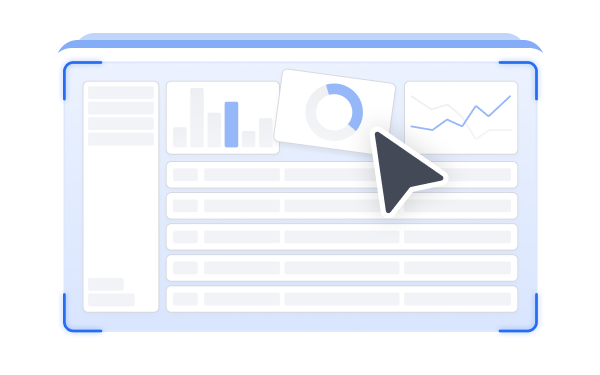Midstream operations consist of transportation, storage, and wholesale marketing of crude oil, natural gas, and refined products. They form a critical link in the energy supply chain. Efficient midstream operations ensure that products flow seamlessly from production to end-users, minimising delays and reducing costs.
As the industry faces growing demand, regulatory scrutiny, and the need for sustainability, leveraging the right software becomes vital for streamlining processes and enhancing operational efficiency.
The right software solution can help midstream companies address challenges such as asset management, logistics coordination, regulatory compliance, safety monitoring, and real-time data analytics.
With the increasing complexity of managing vast networks of pipelines, storage facilities, and terminals, software solutions are evolving to integrate various functions. They provide visibility across the entire supply chain and allow for proactive decision-making.
Selecting the right software is not a one-size-fits-all process. It requires an understanding of specific operational needs, the flexibility of the software, scalability, and alignment with regulatory requirements.
By choosing the appropriate tools, midstream companies can gain a competitive edge that enhances operational transparency and improves risk management.
#Key Considerations When Choosing Software
When selecting software for midstream operations, there are several critical factors to consider to ensure the solution is effective, scalable, and user-friendly.
Below are key considerations that can guide your decision-making process:
Industry-Specific Functionality
Pipeline Management:
Midstream operations often rely heavily on pipeline networks to transport oil and gas. A good software solution should offer features for real-time monitoring, leak detection, flow rate management, and predictive maintenance of pipelines. This helps optimise pipeline performance, ensure safety, and minimise downtime.
Scheduling:
Efficient scheduling software is crucial for managing product transportation across complex networks. It should handle route optimization, vessel and truck scheduling, and coordination with multiple parties (e.g., refineries, storage facilities, and terminals) to ensure timely deliveries and avoid bottlenecks.Compliance Tracking:
The energy industry is highly regulated, with numerous local, national, and international standards to comply with. A robust software solution should include compliance tracking tools to monitor safety standards, environmental regulations, and industry-specific reporting requirements (e.g., OSHA, EPA, DOT). This helps mitigate risks of fines and legal penalties.
Scalability and Integration with Existing Systems
Whether it’s expanding pipelines, adding storage terminals, or increasing the volume of shipments, the software must be scalable to accommodate increasing volumes, new geographies, or additional operational areas. It’s essential to choose software that can grow with your business needs.
Most midstream operations already use a range of tools for different functions such as asset management, enterprise resource planning (ERP), or customer relationship management (CRM).
Choosing software that integrates smoothly with these existing systems will reduce redundancy, enhance data accuracy, and improve decision-making.
APIs, data connectors, and open-source frameworks are often key features to look for in software that can easily integrate with legacy systems.
User-Friendliness and Adoption Challenges
When choosing software for midstream operations, prioritizing an intuitive interface is essential to minimize training time and help employees quickly adapt. A user-friendly design not only enhances efficiency but also reduces human error—critical in high-stakes industries. To mitigate resistance from employees, opt for solutions that are easy to learn and implement, backed by strong customer support and comprehensive training resources. Additionally, selecting software with customization options allows you to tailor the system to your unique workflows, ensuring a smoother integration into your operations.
#Types of Midstream Software Solutions
The midstream sector involves complex processes that require specialised software to ensure the smooth operation, maintenance, and compliance of assets and resources.
Here are some of the most common types of software solutions tailored to midstream operations:
SCADA Systems (Supervisory Control and Data Acquisition)
These systems are used to monitor and control infrastructure such as pipelines, storage tanks, compressors, and valves. They collect data from sensors and devices installed along the pipelines and across facilities, allowing operators to monitor system performance and adjust remotely.
Asset and Maintenance Management Software
This type of software helps midstream companies track the lifecycle of their assets (such as pipelines, storage tanks, compressors, etc.), schedule and manage maintenance tasks, and optimize the performance and lifespan of these critical assets.
Data Analytics and Visualisation Tools
These tools are used to collect, analyse, and visualise large volumes of operational data from various sources (such as SCADA systems, asset management software, and sensors) to help decision-makers gain insights into system performance, identify inefficiencies, and optimise operations.
Compliance and Reporting Platforms
Midstream companies are subject to numerous environmental, safety, and regulatory standards. Compliance and reporting platforms help businesses track regulatory requirements, document compliance efforts, and generate reports needed for audits, inspections, and regulatory submissions.
#Cloud-Based vs. On-Premise Solutions: Pros & Cons
When it comes to choosing between cloud-based and on-premise software solutions for midstream operations, the decision largely depends on your organisation’s specific needs, infrastructure, and long-term goals.
Both approaches have their advantages and drawbacks, so understanding the key differences can help you make an informed decision.
The choice between cloud-based and on-premise solutions largely depends on the specific needs of your midstream operations. Cloud-based solutions are often the better choice if you value flexibility, scalability, and lower upfront costs.
However, if your organisation requires full control over data, security, and customisation, on-premise solutions may be more suitable, despite the higher initial investment and ongoing maintenance.
#Case Study: Optimising Midstream Operations with the Right Software – Enbridge Inc.
Enbridge Inc., one of North America’s largest energy infrastructure companies, operates a vast network of pipelines and storage facilities, transporting oil, natural gas, and other energy products across Canada and the United States.
With a significant presence in the midstream sector, Enbridge faced the challenge of maintaining its large infrastructure efficiently while adhering to strict safety, regulatory, and operational requirements.
Challenge:
Enbridge’s midstream operations involved managing over 17,000 miles of pipeline and hundreds of storage terminals, which required coordination across multiple teams and vast geographic areas.
The company needed a software solution to streamline its operations, improve maintenance management, and ensure environmental and safety standards compliance.
Solution:
Enbridge decided to implement an integrated software solution combining SCADA systems, Asset Management and Maintenance Management Software, and Data Analytics and Visualisation Tools. By adopting a cloud-based system, Enbridge aimed to improve real-time monitoring and data integration across its operations.
Results:
By integrating real-time monitoring with predictive analytics, Enbridge reduced unscheduled downtime by 30%.
Through better asset management and predictive maintenance, Enbridge was able to cut maintenance costs by 20%.
With the new software system, Enbridge improved its safety performance, reducing the risk of incidents such as pipeline leaks or spills.
The data analytics tools provided Enbridge’s management with a clearer picture of pipeline health, system performance, and risk factors.
As Enbridge continued to expand its operations, the cloud-based software solution proved scalable, allowing the company to add new assets, pipelines, and storage facilities to the system with minimal effort.
#Conclusion
In the dynamic and demanding midstream sector, choosing the right software solution is a game-changer. Software tools that provide real-time monitoring, predictive maintenance, data analytics, and seamless compliance tracking not only make operations more efficient but also improve safety and enhance profitability.
By leveraging these technologies, midstream companies can reduce costs, minimize risks, and optimize resource use, ultimately gaining a competitive edge in the market.
Ultimately, software is not just a tool; it’s a catalyst for achieving operational excellence, protecting both people and the environment, and driving long-term business success.




